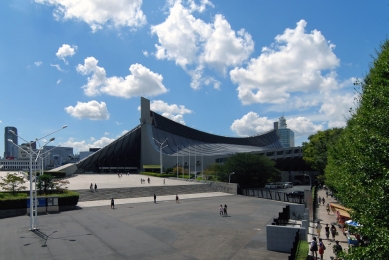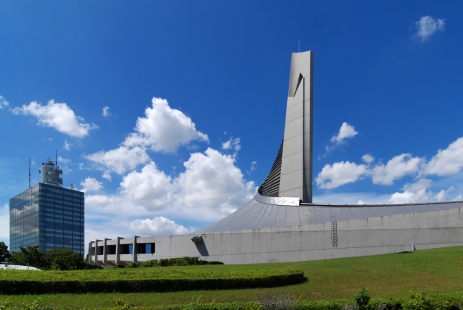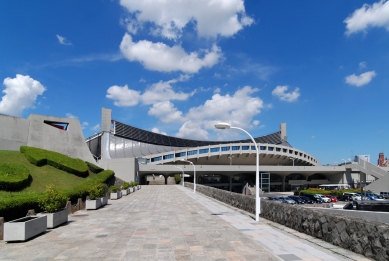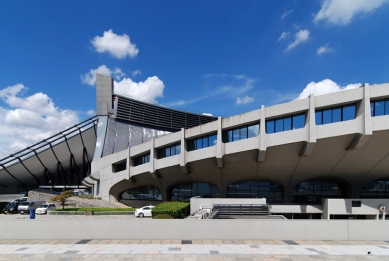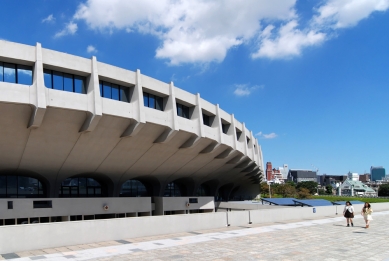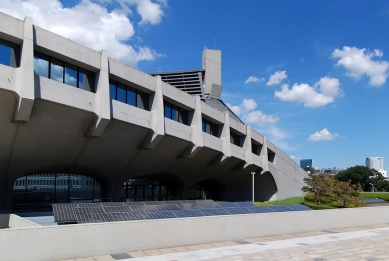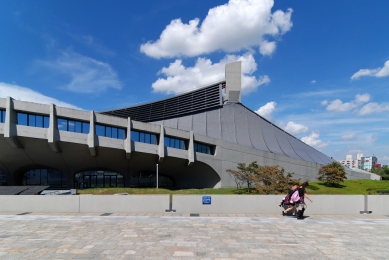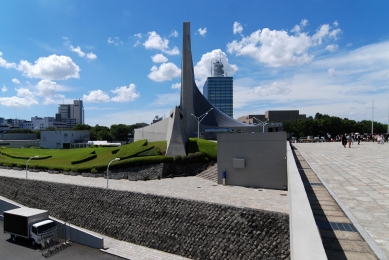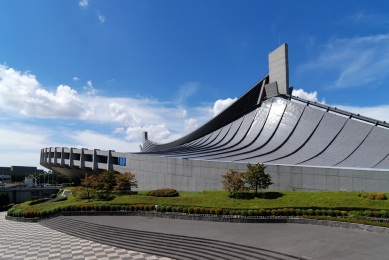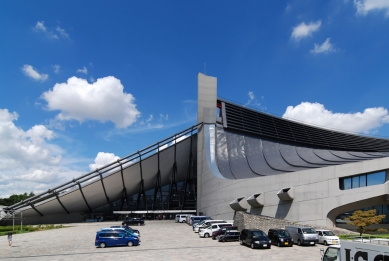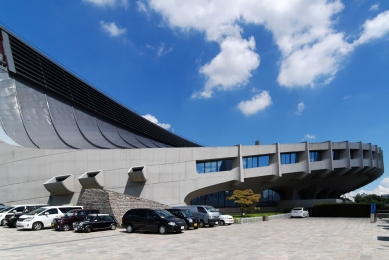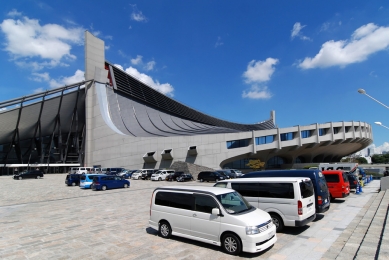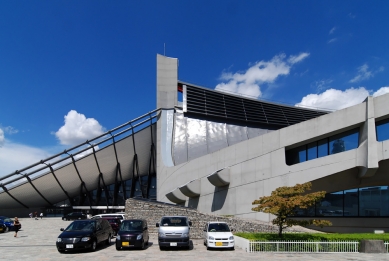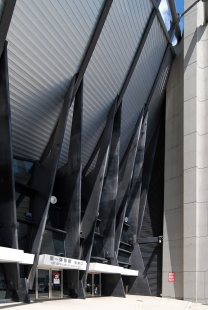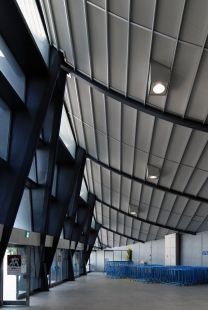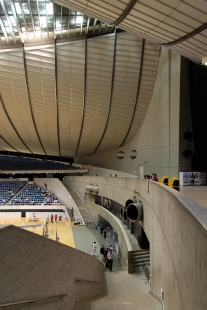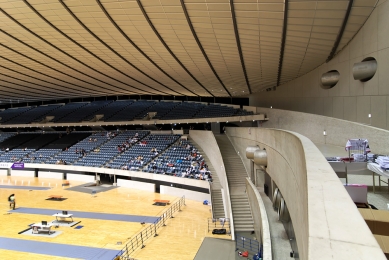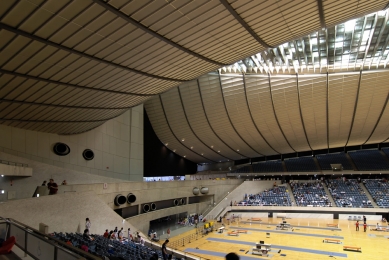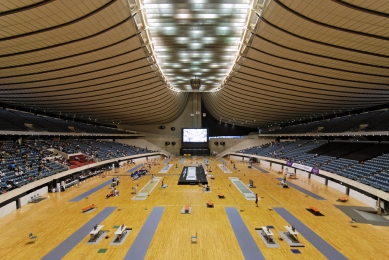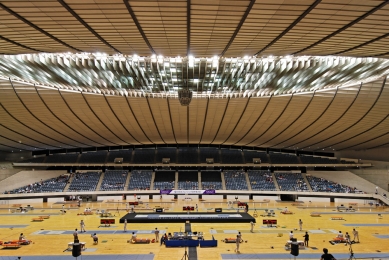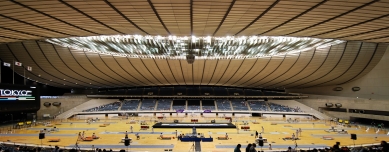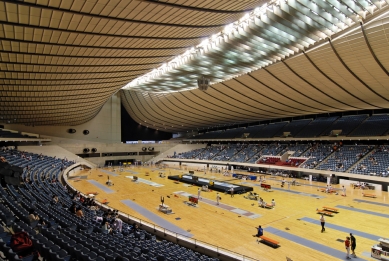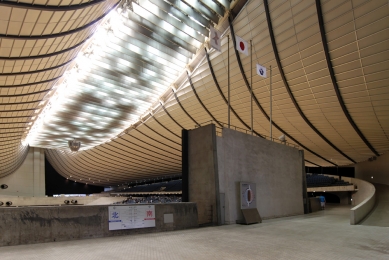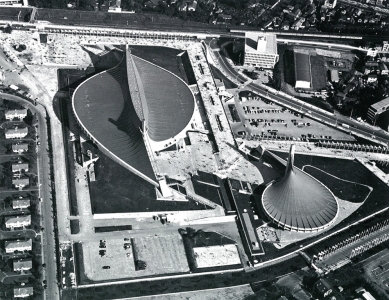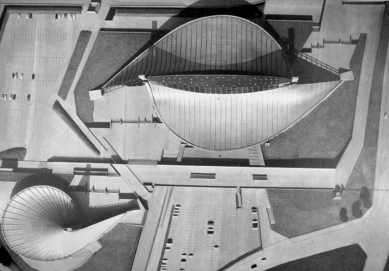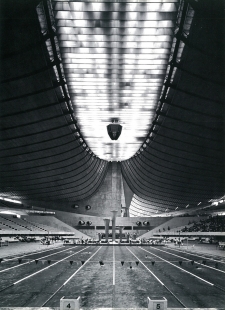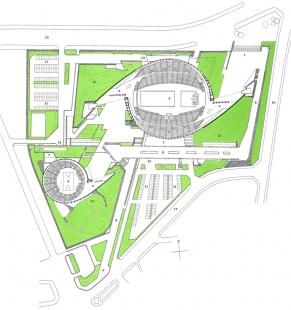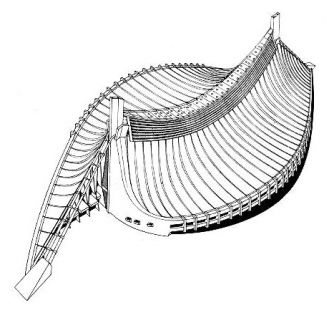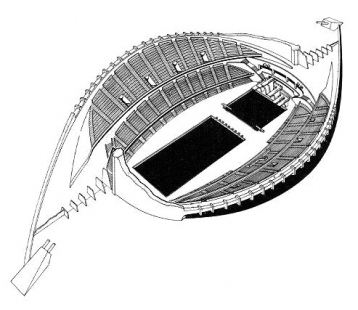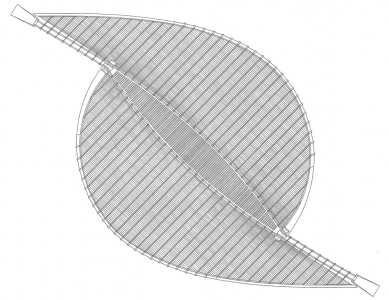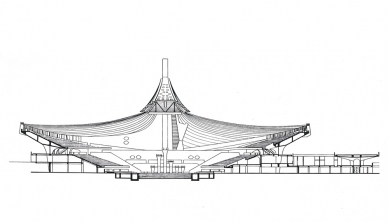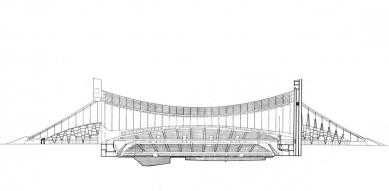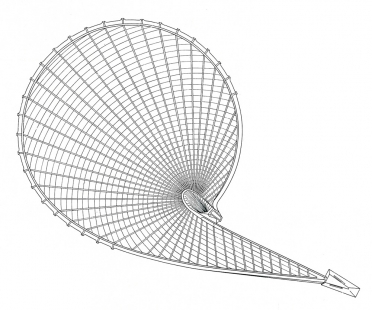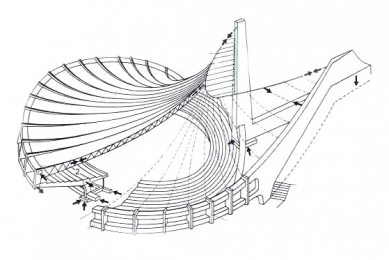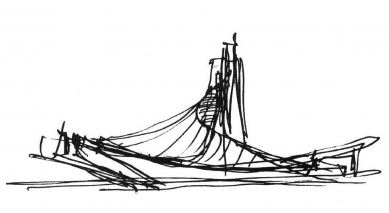
Yoyogi National Gymnasium
国立代々木競技場

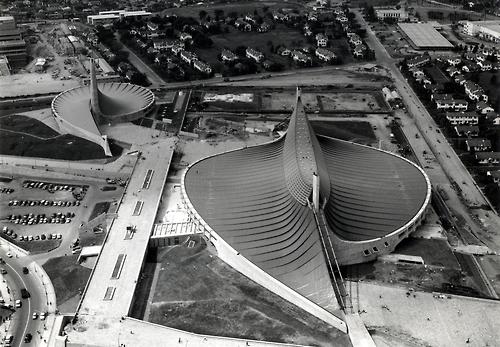 |
Our biggest problem was the Swimming Stadium: how to distribute the enormous space and what structure to use to roof it. We considered various options for the structure. With my colleague Tsuboi and other collaborators, we arrived quite early at the choice of a suspended structure―a steel tensile structure. Steel is the most important technological element in current architecture. Its prerogative, tensile strength, develops in resistance to great tension. The rational use of this prerogative responds to the direction that is being taken in contemporary architecture. Dimensions―I thought―suggest structure: starting from the beam to the arch to the vault to the dome to the suspended structure, according to the distances to be connected, like bridges. Another consideration was added to these: in comparison to the 'convex' space of the dome, the 'concave' space of the suspended structure encloses a much smaller volume, and this also simplifies problems of heating, air conditioning, acoustics―all problems inherent in a huge interior space. But the biggest problem, with respect to the interior space, was guaranteeing that it not take on inhuman proportions when empty or filled with just a few people. No one wanted to fragment the space: we wanted to create and maintain a unified environment where athletes and spectators share growing mutual emotion. A single space―not closed and oppressive but free and open―a space in which the fifteen thousand spectators can also move and flow 'gently' in functional and psychological terms; and not only inside the stadium but from one stadium to another. The suspended structure allowed me to create an 'open form'―the 'single open space' that we desired. It also allowed us to create a visual and ideal relationship between the two stadiums. There is tension not only in the buildings' structure but also in the relationships between the two buildings facing on another with their two open 'mouths'.
So, in the Swimming Stadium the main cables supporting the roof are stretched along the longitudinal axis of the building, between two huge concrete pillars, like a suspension bridge, and, at both ends of the cables, two ties are connected to anchors in the ground. To the right and left of the longitudinal axis are the two large stands; the upper stands, inclined (a ramp for spectator circulation), structurally function as two huge arches, obliquely raised. The roof, created by the secondary cables attached to the axial cables, is fixed, in tension, to these arches―that is to the upper edge of the stands. As a result of this tension, the two axial cables, starting off parallel to one another, diverge, opening a large falcate-shaped gap between them which is used to illuminate the building interior from above. The tension along the curved upper edge of the stands is supported by the base of the large pillars. The roof, stretched between the curved 'concave' axial cable and the 'convex' curve of the upper edge of the stands, is a continuous surface with a double curvature, rendered rigid by this opposition.
"Once I entered the Swimming Stadium, I saw how the space changed dynamically depending on my movements, and it seemed to me that the movements of the people themselves give the space its dynamism."
There were many people who worked on and built the project―architects and structural engineers. And it is important to say that a continuous relationship between the work of each was necessary just like the work of the structural components themselves, because the variation in one element was reflected―given the continuity of the structure―in all the other elements. In this architecture, formal unity is essential. But not always, I must say, were we able to achieve it. In the Swimming Stadium, the formal characteristic is the roof's 'catenary' shape, born from the suspended structure, made of steel. But for a suspended structure, you need a basic compression structure in concrete, and this structure is characterized by the arch. In many points, we were not able to completely resolve the details of these two problems.
The position in plan of the two stadiums was already established when their shape and structure were determined, and thus an architectural relationship between the two buildings already existed. But the true definition of their relationship with the context came about when we resolved the architecture of the 'street' with which would connect them. This is the long building having the function of a 'street' running, between the two stadiums. It is a long 'corridor' which collects all stadium-related services and offices and that has a restaurant and a training pool at the two ends. On the roof of this building is a pedestrian 'walkway' (promenade architecturale), connecting the two most distant entrances to the two stadiums. The roof 'walkway' leads to normal urban streets with three-dimensional intersections with the main slab of the long building. The only thing that did not please me is, again, the relationship between the volume of the buildings and the ground surface. For buildings of this size, the lot is too small, not only visually but also functionally, due to the inadequacy of parking areas. In addition, the problem of the separation between pedestrian and automobile circulation was not resolved...But the pedestrian 'walkway' on the roof worked. I saw this by visiting the stadiums during the Olympic Games. I, too, for once, had the joy of walking along it. And I saw that the movement of entry and exit from the two stadiums was easier than I thought. Once I entered the Swimming Stadium, I saw how the space changed dynamically depending on my movements, and it seemed to me that the movements of the people themselves give the space its dynamism."
Kenchiku Bunka, January 1965
0 comments
add comment


